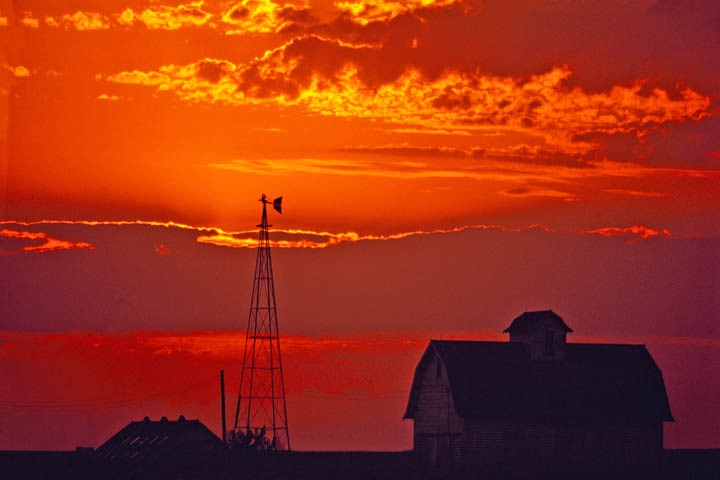June 14, 2012

There is no sentimentality in Robert Switzer’s modestly titled new book, “A Family Farm: Life on an Illinois Dairy Farm.” Switzer, an emeritus professor of biochemistry at the University of Illinois, begins with a quote (from Victor Davis Hanson’s own book on farming) that “the American yeoman farmer is doomed,” and describes the internal and external forces that led to the decline and demise of his family’s farm in northwest Illinois.
The story of the Allison-Switzer farm (named for Switzer’s maternal grandparents, who bought the 121-acre property in 1916, and his father and mother, who took it over after her parents retired in 1946) is just one of millions of such stories, Switzer writes.
“In 1900, 42 percent of the U.S. population lived on farms; by 1990 that number had dwindled to less than 2 percent,” he says in the book’s prologue. This transition occurred largely as a result of economic and technological changes made possible by the aggressively optimistic borrowing, investing and expansion that some farmers were willing to embrace in the latter half of the 20th century. Many other farmers, who had stared down economic catastrophe in the 1920s and ’30s, were unwilling to take on new big risks, and their farms generally gave way to the forces favoring consolidation and the mass-production of agricultural commodities. (Watch an audio slide show about the book.)
Switzer’s book is not a treatise on the evolution of American farming, however.
“The characters in this story are not statistical stick figures illustrating the decline of a Midwestern family farm,” he writes. “They are my family. The details of their lives provide an intimate portrait of a once common way of life, now almost entirely vanished from the American countryside.”
This portrait includes details normally left out of family memoirs: his maternal grandmother’s hostility to her daughter’s intellectual and educational aspirations; his grandfather’s recurrent narcolepsy, a lifelong handicap brought on by severe heatstroke suffered while working in the fields as a teenager; Switzer’s mother’s depression and unhappiness with farm life; and his father’s inability to recruit his sons to the profession.
The book also offers an account of the changes that occurred over the 76 years the family owned the farm, from the early days of kerosene lamps, hand milking and horse-drawn plows, to the gradual – though never fully realized – modernization of equipment and farming techniques.
Switzer begins with the gritty details of his grandparents’ daily life. Charlie and Mabel Allison milked their cows twice daily in a drafty barn. They lived in an oversized and poorly insulated farmhouse with no modern conveniences. They grew corn, hay, oats and barley to feed their livestock and themselves. Charlie carted fresh milk to a nearby cheese factory every morning. Mabel kept a vegetable garden and orchard, and canned produce for the winter. The couple raised chickens and sold their eggs.
By the time a young Robert Switzer was old enough to know them, Charlie and Mabel “seemed rather old and exhausted to me, worn out by years of hard work and living under harsh conditions.”
In 1946, the Allisons retired and Switzer’s parents (Stephen and Elva Switzer) took over the farm, much to his mother’s dismay. Before she married, she had had a promising start on a career in science, going to college with the help of a wealthy aunt. She had been offered a partial scholarship for graduate study at Cornell University. But her parents opposed the idea and Elva would not ask her aunt for more support.
Stephen Switzer, a World War II veteran with few prospects other than farming, benefited from an “On-Farm Training” program, part of the GI Bill. Like many other farmers of his day, he learned to test the soil; to use commercial fertilizers, herbicides, pesticides and hybrid seed; to plow in contours across slopes to reduce erosion; to use artificial insemination to breed better milk cows; and to test the butterfat content of the milk his cows produced. He also began to buy more modern farm equipment.
These programs increased farm efficiency across the U.S., and production soon outpaced demand. As a result, average prices for agricultural products plummeted in the early 1950s. Still, the Switzer farm, fueled in part by the labor of two young boys, held on.
The elder Switzer drafted his sons into work without evoking a positive vision of their future on the farm, however, and the small farm offered little opportunity for them when they grew up. It was “little wonder that both of us left home as soon as we finished high school,” Switzer writes.
Inspired by his mother’s love of science and school, Switzer gravitated toward a life as a professor. School offered an escape from farm work, and the study of chemistry and biochemistry at the University of Illinois thrilled and fascinated him. His brother Steve moved on to a successful career at a builder’s supply company.
This was the beginning of the end of the Switzer family farm. The younger Switzers’ dislike of farm life, and Stephen and Elva Switzer’s unwillingness to go into more debt to hire help, expand or improve the operation in significant ways spelled its eventual end as a stand-alone farm.
Elva Switzer died in 1977, and Stephen lived on in his “senescing farm” for another 14 years. After his death, the family farm shared the fate of millions of others in the late 20th century. The contents of its house, barn and other outbuildings were sold at auction, and the land went to a neighboring farmer who wanted to expand his holdings.
You May Also Like




